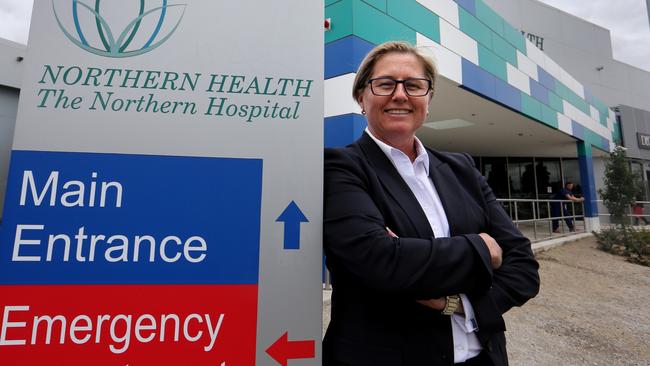LinkedIn data shows oversupply of healthcare workers in Adelaide
Networking site LinkedIn reveals where the country’s healthcare jobs are.

Healthcare providers in Sydney, Melbourne, Perth and Brisbane struggling to find enough or adequately trained employees need to look no further: there is an oversupply of workers in Adelaide ready to meet that shortage.
According to online networking site LinkedIn, Adelaide is the national hot spot for qualified health professionals — including nurses, doctors and social workers — and while there may not be enough jobs for them in South Australia, they would be able to fill the shortages in the eastern states.
LinkedIn talent solutions director Jason Laufer says a study of the 235,000 healthcare professionals registered as members of the networking site has shown where the demands and oversupplies are, along with how and where they are employed, and whether they are actively looking for a new job.
Healthcare is the second largest talent pool using the site in Australia, after technology, and Laufer says the snapshot can help recruiters find the right people for jobs in the healthcare industry, and how to tailor their advertising to fit the tight market.
“There is a huge gap in the healthcare industry in Australia and there’s a lot of pressure with the ageing population,” Laufer says. “We help companies understand where to look, how to look, and help organisations with how to find talent.”
Of the health workers on the professional networking site, Laufer says 30 per cent are actively looking for a new job at any one time, and 70 per cent are passively looking.
That means they may be using the site to network, read health blogs, educate themselves or passively monitor which companies are recruiting.
The site’s analysis shows the public sector is the largest healthcare employer, taking on 32 per cent of members. Nurses use the site more than other health professionals, at 32 per cent, and a further 19 per cent are technicians or medical assistants, and 17 per cent are doctors or surgeons.
And if you are a gynaecologist, radiologist or sonographer, you may be in luck — the site has found the three medical specialist roles are the most in-demand in healthcare.
Laufer says healthcare professionals are using the site for three main reasons: to connect to others and network, to stay up-to-date with the latest education, and to find new roles and opportunities.
With an increasing number of people using the site for networking opportunities, Laufer says smart businesses are finding it a goldmine for recruitment. “Organisations in the public or private sector are using our site to find people with the right skills,” he says.
“You can access a small list of people to find them in Australia or overseas. It’s a global platform and we’re seeing a trend with people coming in from the UK, US and New Zealand.”
The site found in the 12 months to June last year, 262 healthcare workers who were site members immigrated to Australia from Britain, 139 came from the US, 117 from New Zealand, 66 from Canada and 53 from Singapore.
The flow in the opposite direction was similar, with 353 Australian healthcare workers moving to Britain, 285 to the US, 147 to New Zealand, 76 to Canada and 64 to Singapore.
The top healthcare employer using LinkedIn to recruit was Queensland Health, followed by NSW Health, and organisations including the University of Sydney, Ramsay Health Care, SA Health, Monash Health and Ambulance Victoria.
Those most followed — indicating they would be preferred employers — include Aspen Medical, Queensland Health, the Black Dog Institute, Pfizer and Ramsay Health Care.
Laufer says workers the site surveyed also listed what was most important to them as a health professional, and having a work-life balance came up trumps ahead of excellent compensation and benefits. “If companies are looking for that talent it’s how you identify yourself differently, what’s your point of difference in the healthcare industry,” he says.
***
Hospital heads online to network with health workers
With a national shortage of nurses looming and growing demands at Melbourne’s Northern Hospital, operator Northern Health has taken to LinkedIn to recruit healthcare staff.
Acting executive director of people and culture Michelle Fenwick says the Epping hospital is on one of Melbourne’s busiest road corridors and the local population is expected to grow by 64 per cent by 2031.
That means increasing demand for services — baby deliveries have more than doubled to 4000 a year since 2011 — and emergency treatments hit 77,000 last year.
“Putting an ad in The Age, The Australian, into Seek is all very good if you’re looking for a job, but you might not be actively looking at my hospital,” Fenwick says.
“What LinkedIn offers me is I sit at home and I get these little ticker tape notifications coming to me, and I may not be interested in that job but one day it might be interesting. I’m tapping into the unconscious psyche of people out there.”
Fenwick says 74 per cent of the hospital’s nurses come from within the local government area, and using a passive networking site means potentially she can target health workers living in other areas who are planning their future and considering a move to Melbourne’s growing north.
“I may be able to get into your loungeroom and into your planning, and if I can save you an hour in traffic and you can do something different, that’s a really powerful tool,” she says.
Northern Health has been using the site for nine months and its followers have increased to 8000 people.
Fenwick says the more followers, the more people are aware of the hospital and the greater the passive recognition of job opportunities.
Internal research and data provided by LinkedIn shows 6 per cent of the hospital’s recruits have come directly from people seeing ads on the site across the past nine months.


